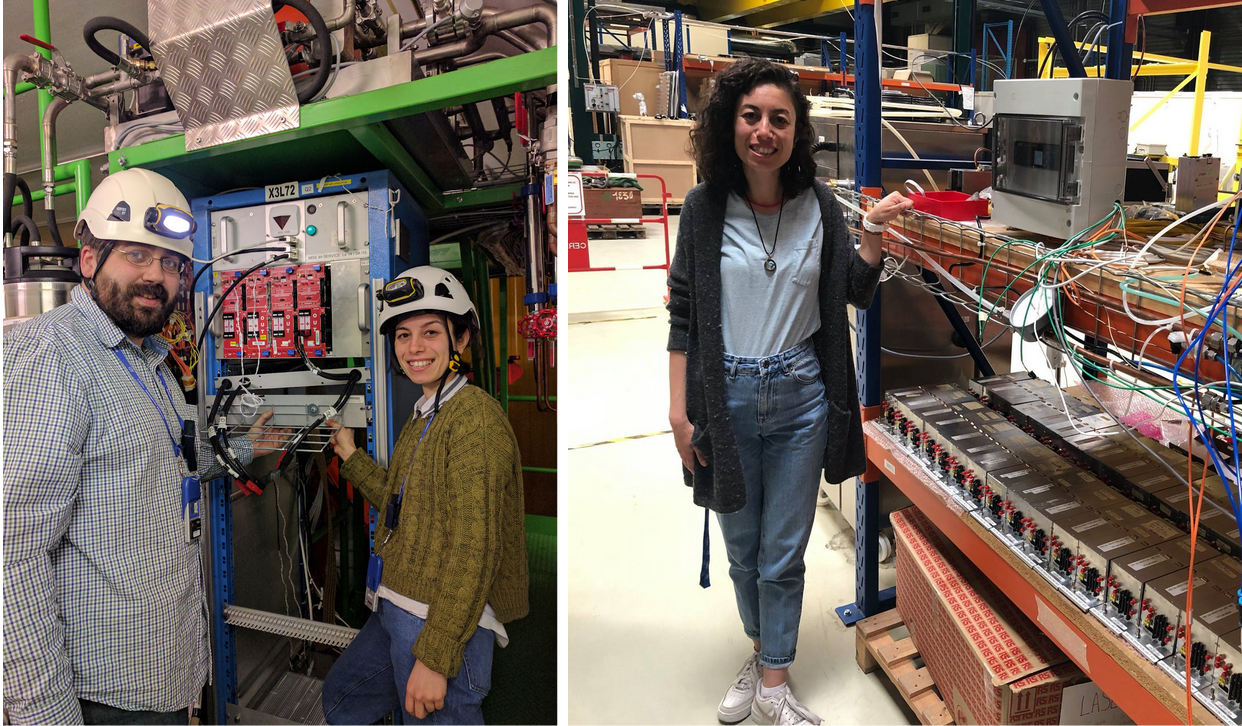When I was in primary school, my curiosity manifested itself with a question "is this ant foreign!?". When I saw a big ant for the first time, I asked this question to my mom. She says that I always asked lots of questions when I was child. Until my high school term, I kept observing everything around me... sometimes by building things from mud, sometimes by collecting leaves from nature, etc. Also, I always kept an English dictionary in my pocket to check words.
When I took my first physics lesson in high school, I thought that learning physics from only books or teachers wasn’t physically touchable. Then, during my undergraduate term, my research adventure started with a book called "Five Equations That Changed the World". This book has awakened me to be an experimental physicist and work in the laboratories for linking up science and the universe more. The most effective story from this book was Albert Einstein, who said that "The true sign of intelligence is not knowledge but imagination!". I have started my long way with Albert Einstein! As a curious person and as I keep imagining, I found my path and my adventure started with a hardware project in the Compact Muon Solenoid (CMS) experiment at CERN.

Supersymmetry is my muse!
Right after my Masters, I continued working on hardware projects as a Ph.D student at CERN, and contributed significantly to assembly, testing, and commissioning of the Phase-1 upgrades of the CMS HCAL. At the same time, I also took some local and central shifts for the detector operations. Living for the first time in a foreign country, working on my Ph.D. and figuring out everything from scratch felt stressful. You can imagine that so many new things for the hardware projects including all tools in the test stand, a lot of coding in C++/Python/ROOT for both detector and physics analyses, speaking fluent English all the time at work and many other things did put pressure on me. After some time I realized that I need to find a way to make my brain (and soul) relaxed. That’s when I discovered the positive effects of acrylic painting. After all the busy and stressful times in the lab were done, I was painting in the evenings. Those years were all about messy acrylics and late nights spent learning charcoal on YouTube.
I moved to Fermilab in mid-2019 to work in physics analysis which is a Supersymmetry (SUSY) search. Little did I know that Supersymmetry was soon to become my muse! The funny thing is, my drawings often reflect the world I work in. Since my research focuses on supersymmetry (SUSY) – a theory in physics that explores extra dimensions and particles – my sketches naturally tend towards geometric shapes and patterns. Then, in 2020 a pandemic popped up and I was stuck at Fermilab until the end of 2020! The pandemic affected me a lot: I had sleeping problems for many weeks and overthinking must be the hardest thing to cause losing focus…So, this was how I came up with a new drawing technique.

From Stress Relief to Self-Expression
Drawing became my daily ritual. It wasn't unusual for me to create up to eight sketches in a single day! This wasn't about filling time, it was a way to focus and see the bigger picture.
In between 2021-2022, I was back to my hometown in Turkey with my family, focused on my Ph.D. thesis. Due to COVID-19 I had little to none interaction with the external world. It was a very hard term that I had been working for 14-16 hours to do analysis, write the thesis and analysis notes. Weekly analysis meetings also put extra pressure on me where I had a lot of trouble focusing on what we were discussing about the analysis. During those endless Zoom meetings, sketching helped me stay concentrated. Maybe it's the repetitive motions, or maybe it engages a different part of my brain, but doodling definitely keeps me present.

Ever since, drawing has become a constant companion. I've mostly switched to technical pens, and recently, I've also begun experimenting with watercolors. It's not just for when I'm stressed anymore; I find myself reaching for my pens and paints during happy moments too. It's become a natural way for me to express myself, no matter the mood.
As always inspired by Albert Einstein, I have never given up to imagine being wherever I am now! It has been a long way to getting my Ph.D. which I had been working hard and struggling a lot to make it work – sometimes it looked like a miracle...sometimes it seemed like a loss...but I always felt lucky because of many notable people passing through my life during my Ph.D. term! Fueled by inspiration and the support of so many, I'm now a doctor! Plus, soon I am going to join the UCLouvain group in Belgium, so I'll keep working on the CMS Experiment at CERN!
Disclaimer: The views expressed in CMS blogs are personal views of the author and do not necessarily represent official views of the CMS collaboration.
